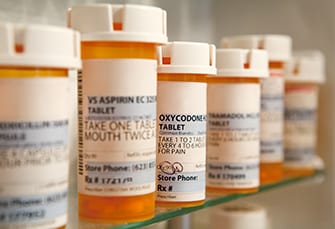What is DEA National Take Back Day?
According to the official DEA National Take Back Day website, The National Prescription Drug Take Back Day addresses a crucial public safety and public health issue. According to the 2018 National Survey on Drug Use and Health, 9.9 million Americans misused controlled prescription drugs. The study shows that a majority of abused prescription drugs were obtained from family and friends, often from the home medicine cabinet. The DEA’s Take Back Day events provide an opportunity for Americans to prevent drug addiction and overdose deaths.
How to Participate in DEA National Take Back Day
Addiction can take its own form on anyone under the sun. Nobody is safe from addiction, and this includes the people in your very own home. Individuals who grew up in a happy home may still fall victim to addiction, which is why taking as many preventative measures as possible is so important. One of these is by participating in DEA National Take Back Day and getting rid of all the unused prescription medication. By removing this possible temptation or introduction into drugs, it could help save someone in your home from a lifetime of battling addiction.
Collection Sites
You are able to safely – and anonymously – dispose of your unused prescription medication at various collection sites throughout the country. It is very easy to find one; all you need to do is fill out the form on the official DEA National Take Back Day website with your location information.
If there is not one in your area, just keep refreshing the page as new locations are added frequently. If there is still not a collection site in your area, there are still other ways you can participate in DEA National Take Back Day and safely dispose of your unused medication.
Safely Dispose Without a Collection Site
Disposing of prescription medication isn’t as easy as tossing it in the garbage and forgetting about it. According to BeMedWise, there are a few tips to keep in mind when disposing of prescription medication.
- Do not throw away the bottle with pills intact. This may cause thievery from the medicine from your trash and may also cause that person to return uninvited for more.
- Scratch off the sticker. The sticker around the bottle contains a lot of personal information, including your name, your address, your condition, and your local pharmacy.
- Mix them with dirt, kitty litter or coffee grounds. Crush the medication and mix it together with something “unpalatable” as to remove the temptation of getting it back and to prevent thievery.
- Throw away in the household trash; do NOT flush. Medication cannot be flushed unless it is specifically stated on the bottle. This is because it can mix in with various water systems and cause damage. Instead, follow step 3 and dispose of it in the household trash.
Prescription Medication Addiction
By removing the unused prescription medication in your home, you are doing your small, yet important, part in combating prescription medication addiction. Prescription medications are very often opioids, and the opioid epidemic is on the rise.
According to the National Institute on Drug Abuse, every day, more than 130 people in the United States die after overdosing on opioids. The misuse of and addiction to opioids—including prescription pain relievers, heroin, and synthetic opioids such as fentanyl—is a serious national crisis that affects public health as well as social and economic welfare. The Centers for Disease Control and Prevention estimates that the total “economic burden” of prescription opioid misuse alone in the United States is $78.5 billion a year, including the costs of healthcare, lost productivity, addiction treatment, and criminal justice involvement.
Naloxone
If there is someone in your home who is suffering from an addiction to prescription medication, it is extremely important to make sure you keep Naloxone handy inside your home. Naloxone is an opioid receptor antagonist that binds to opioid receptors. By doing this, Naloxone essentially reverses the effects of an opioid overdose which could potentially be life-saving. Naloxone reportedly reversed over 26,000 overdoses between 1996 and 2014.
Naloxone is available for purchase over-the-counter at most major drug stores. It is the first thing that a first responder would use when arriving, so getting a jump-start on this could save your loved one’s life.
About Pinelands Recovery Center
DEA National Take Back Day is October 26, which is a great opportunity to help prevent addiction from taking place in your home. However, if you or a loved one has already begun experiencing prescription drug addiction, it is important to get help as soon as possible. The earlier a person is able to receive treatment, the easier they will be able to detox and live in recovery.
Pinelands Recovery Center of Medford is widely known as one of New Jersey’s finest, most respected addiction treatment facilities. With comfortable 30-bed accommodations and 24-hour professional staff, we can offer clients a serene, relaxing environment amid the lush piney woods. This stress-free setting with its sense of warmth and welcoming enables you to feel comfortable and confident about your clean and sober life ahead.
We will establish clear goals, both general in nature and specific to your needs. We continue to monitor those goals, to make sure that our clients are progressing and buying into their recovery plan. We thrive on assisting clients in feeling connected to the recovery community, share and demonstrate effective coping techniques, help clients to modify attitudes and patterns of behavior and everything else you will need to be happy and productive living a sober, healthy life.
We ensure that clients complete their planned concrete tasks, encourage hope, optimism and healthy living. Our recovery program is not a revolving door treatment program; it is a recovery model designed to help clients go on to lead productive, happy lives. For more information, visit pinelandsrecovery.com
